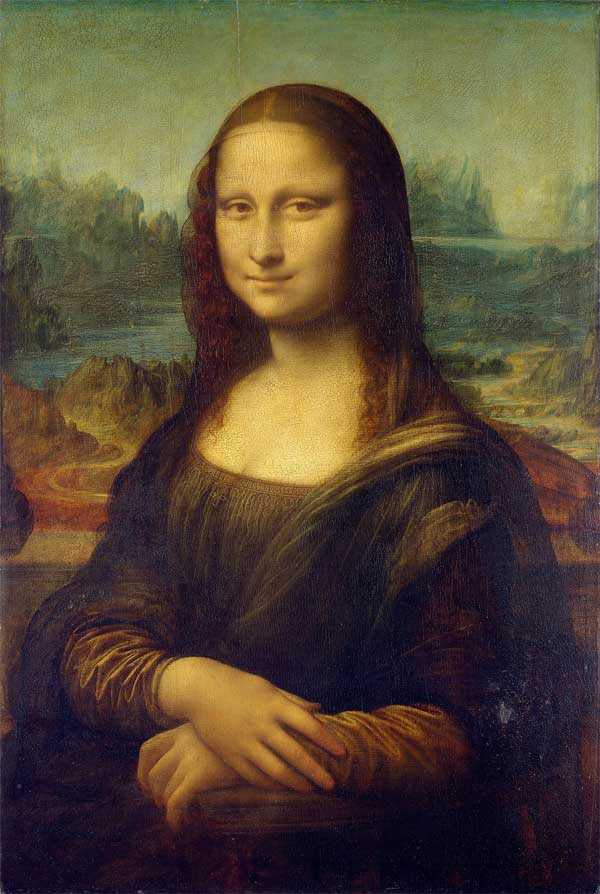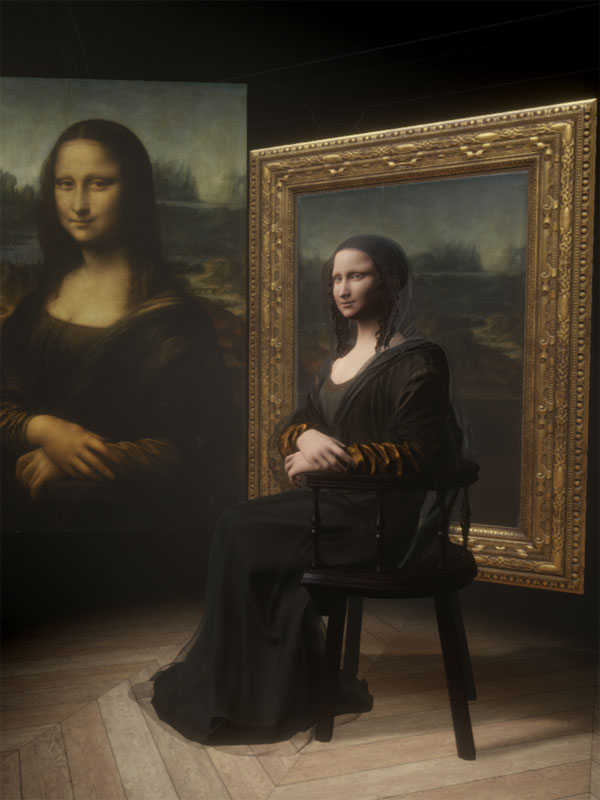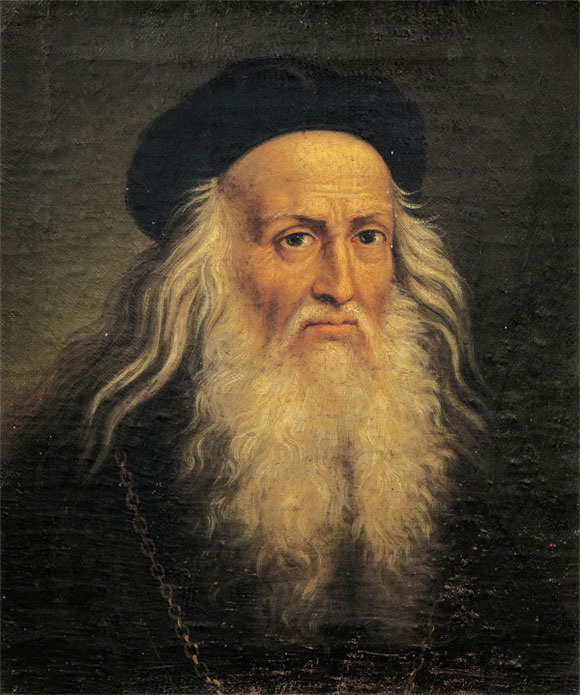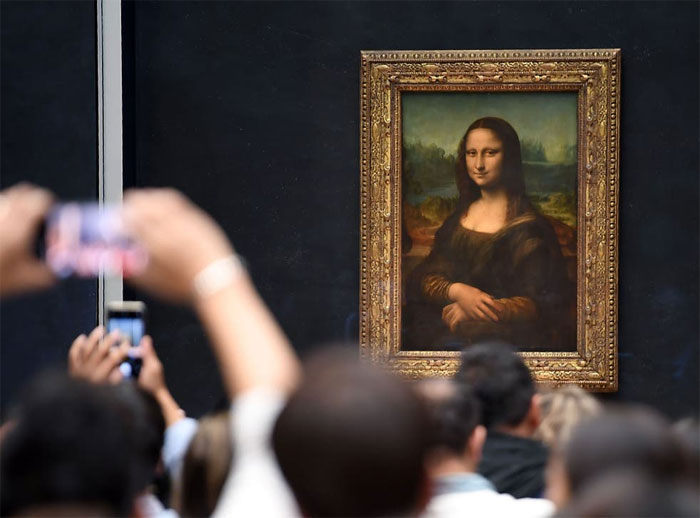The portrait of Mona Lisa is not only a hallmark of the life of the great painter Leonardo da Vinci but also a legendary masterpiece in the history of art. After hundreds of years, the ambiguous smile on Mona Lisa’s lips continues to be a topic of discussion and analysis. However, not everyone knows about the real life behind the painting of this Italian lady.
The Sorrowful Marriage
The model for the Mona Lisa painting is Lisa Gherardini, later known as Lisa del Giocondo after her husband’s surname. She was born on June 15, 1479, in Florence, Italy, as the eldest child in a family of declining nobility.
At that time, young girls were often married off early to older men. In 1495, at the age of 16, Lisa was married to Francesco del Giocondo, a wealthy 30-year-old merchant. This marriage elevated Lisa Gherardini’s status, allowing her to begin a life as a woman of the upper class, but it was not without its share of sorrowful events.

The Mona Lisa painting. (Photo: I.T)
After marriage, she quickly became pregnant and gave birth to six children within ten years, of which only four survived to adulthood. Her second daughter, Piera, died at the age of two, and another child died at birth.
The most scandalous information about Lisa’s family is regarding her husband’s “interests” in trading and owning slaves. For generations, Francesco’s family had a tradition of this sinful occupation. In the book Mona Lisa: The People and The Painting, authors Martin Kemp and Giuseppe Pallanti describe: “From a young age, Francesco lived alongside female slaves bought by his father, and after his father’s death, it became his responsibility to purchase new slaves. He occasionally bought more slaves than necessary.”
Historians also suggest that Lisa’s marriage was not particularly happy. A notable incident was when Lisa was courted by two noblemen who were friends of her husband. Lisa firmly rejected their advances. On the other hand, instead of being angry with the two men attempting to seduce his wife, Francesco feared that Lisa’s rejection would negatively affect his relationship with them. Because these men were very powerful, after the scandal, Francesco visited them to affirm his support and assure that their relationship remained friendly. His weakness and cowardice were mocked by the other party.
Author Martin Kemp also describes Lisa as a woman controlled by her husband, like many women of that era. Her husband’s wealth kept Lisa in “a wardrobe full of impressive clothes”, although viewers cannot see this in the painting of her.

3D model of Lisa reconstructed by the Louvre Museum.
The Connection with Leonardo da Vinci and the Masterpiece
It is unclear how the artist Leonardo da Vinci came to connect with Lisa, but there is a link: Leonardo’s father was a lawyer, and Lisa’s husband was one of his clients. Many studies also suggest that Lisa’s family lived in the same neighborhood as the artist’s father. In 1503, the master began painting the portrait of the 24-year-old woman who would become the most famous masterpiece of his career.

Master painter Leonardo da Vinci.
It is likely that Francesco commissioned Leonardo da Vinci—who was then an unknown artist—to paint a portrait of his wife. Like many wealthy families in Florence, whenever there was a significant event, the couple would invite artists to create commemorative portraits. In 1503, Lisa was pregnant with her third child and had just moved to a new home, prompting the family to invite Leonardo da Vinci to paint a commemorative portrait.
The Mona Lisa painting was created over 16 years, from when Lisa was a young lady until she reached middle age. This pinnacle of painting was never truly completed, as it was left unfinished in 1519 when Da Vinci passed away. He also never delivered the painting to the client, taking it to France in 1517 instead.
In her later years, Lisa lived in a convent. She passed away on July 14, 1542, at the age of 63. When both the painter and the model had died, the unfinished portrait of Mona Lisa was not yet famous and remained unknown. It wasn’t until centuries later that Lisa—a common noblewoman among millions of women in the 16th century—suddenly became famous.
In 1550, somehow, the portrait of Mona Lisa found its way into the collection of King Francis I of France. It was exhibited several times in the Louvre Museum. In 1800, Napoleon expressed great admiration for this painting and hung it in his bedroom. He returned it to the museum four years later.
As time passed, rumors about the beauty of the painting spread, and the mystery of Mona Lisa’s smile left many pondering. Her smile has captivated millions around the world, yet the secret behind that smile will forever remain a mystery.

The painting Mona Lisa currently belongs to the French Government, displayed at the Louvre Museum.
Today, housed behind bulletproof glass in a prominent position on the wall of the Louvre Museum, the Mona Lisa is the most valuable painting in the world. Her enigmatic smile attracts millions of visitors to the museum each year. Statistics show that up to 80% of visitors come to this museum annually just to catch a glimpse of Mona Lisa’s smile.


















































